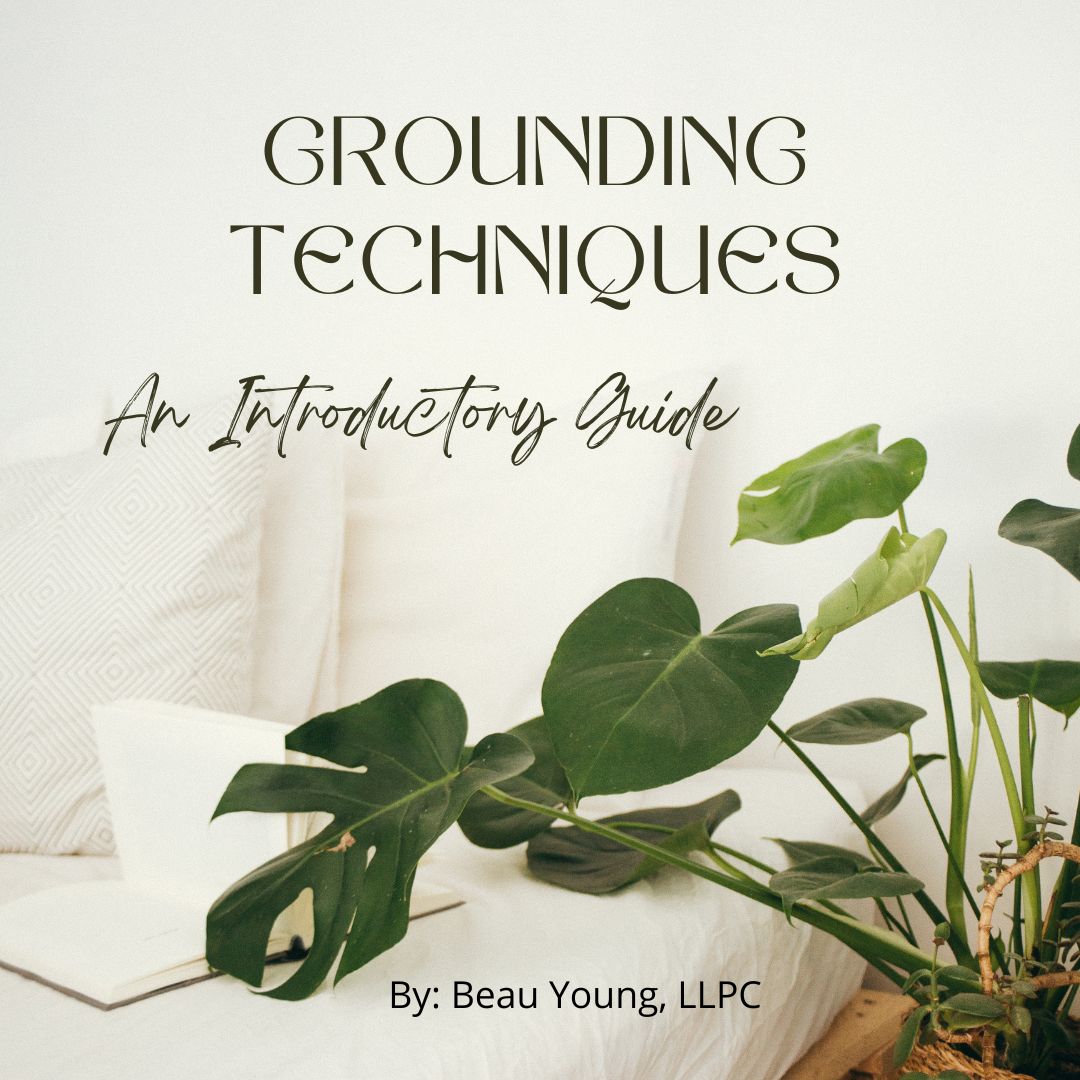
An Introductory Guide to Grounding Techniques
By: Beau Young, MA. LLPC
What are Grounding Techniques?
Grounding techniques are a tool that can be utilized in a variety of situations to help individuals calm down their bodies and quiet negative thoughts when experiencing strong emotions such as anxiety, anger, or states such as dissociation. Each of these emotions can cause overwhelming physical reactions that can be distressing to the individual experiencing them. For example, during a bout of anxiety, one may experience any combination of the following: racing thoughts, rapid heartbeat, shallow breathing, nausea, or shakiness. Grounding techniques can be used in times of stress to help minimize the negative effects of these physical symptoms.
The name of this type of technique is a straightforward, mostly literal depiction of the goal of using these techniques, i.e. to feel grounded, connected to the Earth, the here and now. The goal of these techniques is to bring you back down to the present moment, rather than circling around aimlessly amidst a barrage of negative thoughts/sensations in the body. These techniques can help an individual manage the effects of many disorders including depression, PTSD and other trauma, and anxiety. The goal of grounding is to find peace within the body.
Why are Grounding Techniques useful/effective?
The main reason why grounding techniques have been found to be so effective in soothing oneself is due to the fact that it helps to calm the central nervous system. The central nervous system regulates our breathing, heartbeat, and other involuntary body functions. You can think of grounding techniques as a way to cheat the code of our brains, debugging the computing misfires which result in the aforementioned negative sensations throughout the body.
How to Use the 54321 Grounding Technique
The 54321 Grounding Technique is a popular tool for grounding oneself in a variety of settings. The adaptability of this technique is the main reason why I teach it to many of my clients at one of their early sessions in treatment, to give these clients a tool that can be utilized and easily modified to fit the time and setting of use. Ideally, this exercise should take you approximately 5 minutes to complete, in order to give your body enough time to regulate itself and feel the full benefits.
To start, look around the environment that you are currently in and begin to identify 5 things that you can see. Once you have chosen which 5 items to focus on, begin to hone in on them with as much detail as possible. This will help you to remain focused on the task at hand, rather than the triggering event that may have led you to use this technique. Something I find helpful in teaching clients this technique is to visualize themself as an ant walking around on each object. This perspective shift will help you notice the details of each object more clearly. For example, a coffee table… You may notice the grain of the wood, how weathered the furniture is, and its size in relation to the room it is in.
Once you have completed the sight portion, move on to identifying 4 things that you can touch. An easy example of this would be clothing. How does it feel on your skin? Is it tight, loose, soft, or warm? Is there a piece of clothing that feels more comfortable than another? Take time to notice any sensation you are experiencing from your clothing. Alternatively, touching soft blankets/stuffies, using fidget items, or noticing the ground beneath your feet are helpful in
maximizing the benefit from this exercise.
After touch comes hearing. Try to notice what types of sounds you hear around you. Is there ambient noise such as fans, tv, or cars in the distance? If you are a music lover, it can be very helpful to try putting on a song that brings you joy – then focus on isolating the various sounds in the song such as the instruments being played, the harmonies, and the piece as a whole. If there are no sounds are happening around you, notice the silence.
Next, identify two things you can smell. This one can be more interesting if you are at home, where you can choose pleasant scents of your liking such as perfumes/colognes, candles, or even deodorant. A majority of these items have combined scents, named ambiguous titles such as “fall breeze” or “ocean spray”. Try to isolate the different notes throughout the scent, you may notice citrus, floral, spicy, or musky notes to each item as you breathe in.
Finally, move on to one thing you can taste. If you are prone to experiencing strong emotions that might lead you to utilize this skill often, it can be helpful to carry with you a pack of gum, candy, or other small food item you can easily pop into your mouth when attempting to ground yourself. Similarly to scent, try to isolate the various flavors in the item you have chosen to eat for this exercise. You can also pay attention to texture, temperature, and any other noteworthy elements of the experience.
Once you have completed each step, you will hopefully have given your body enough time to reset your central nervous system, calming your heart rate and breathing as you focus on observing the environment you are currently in.
